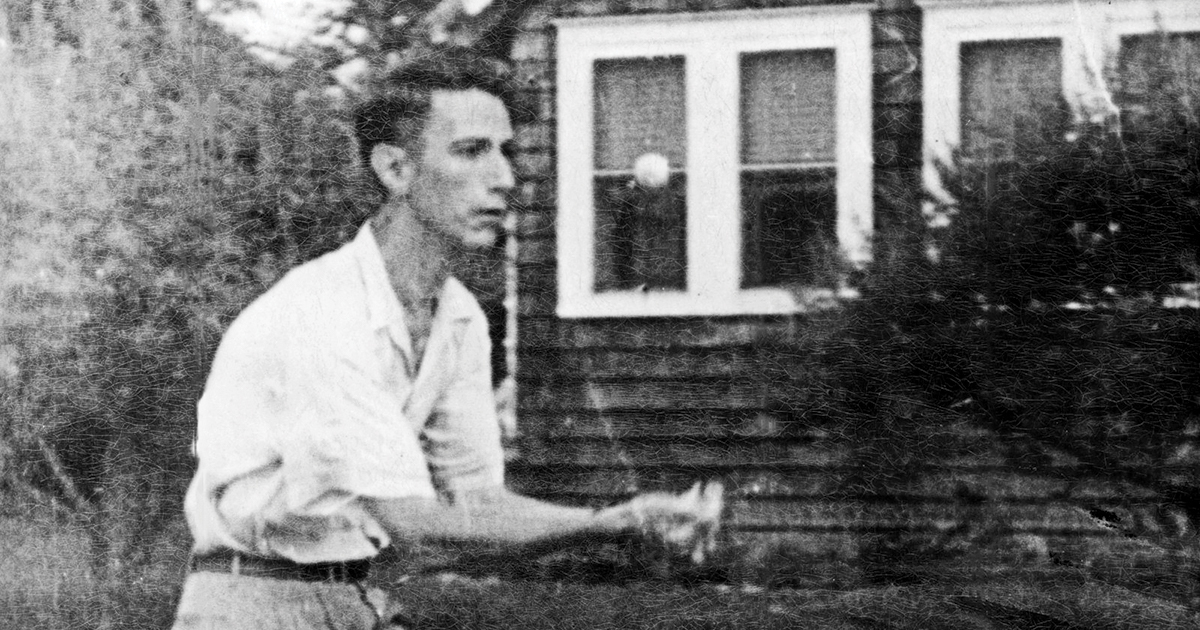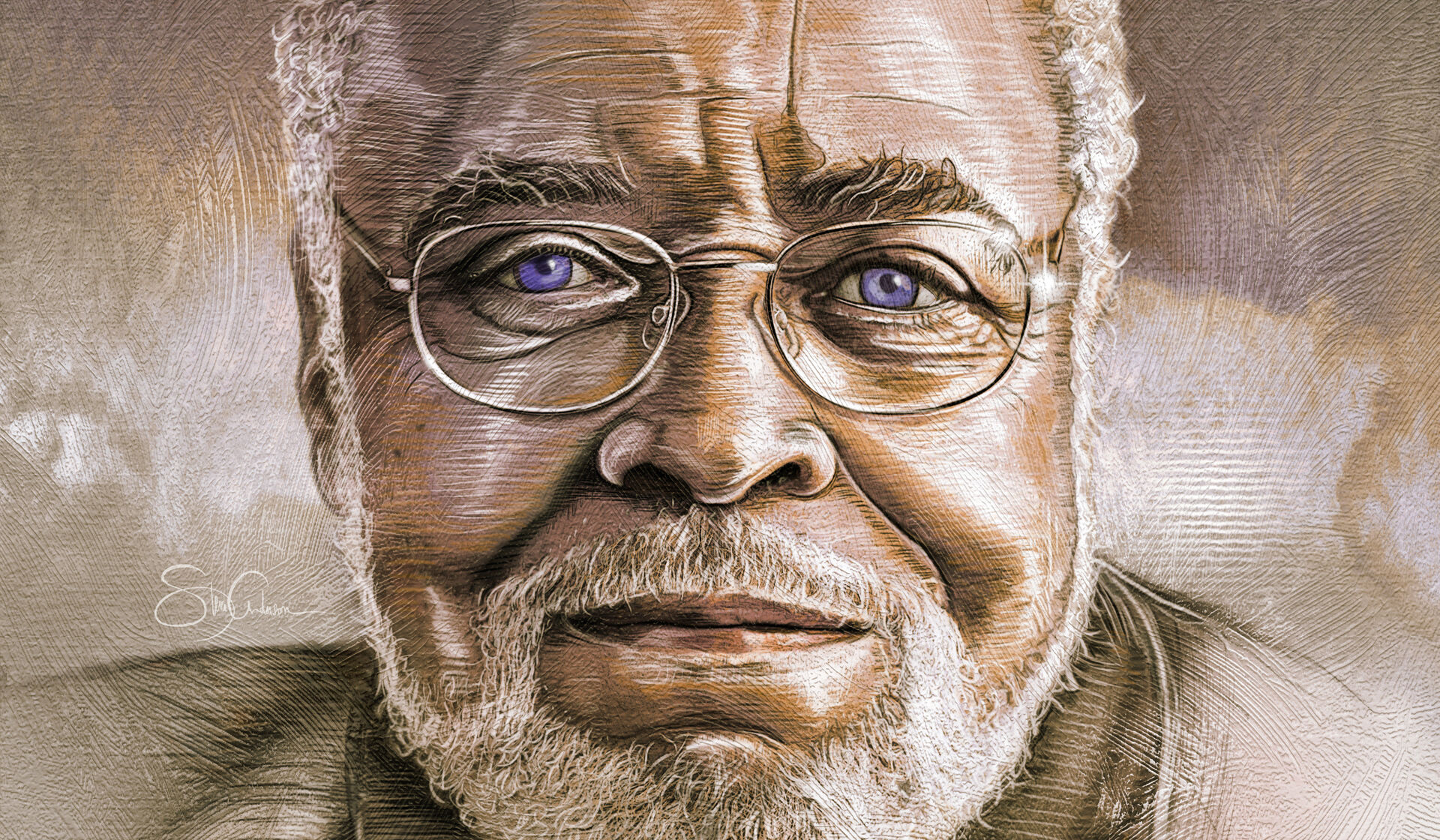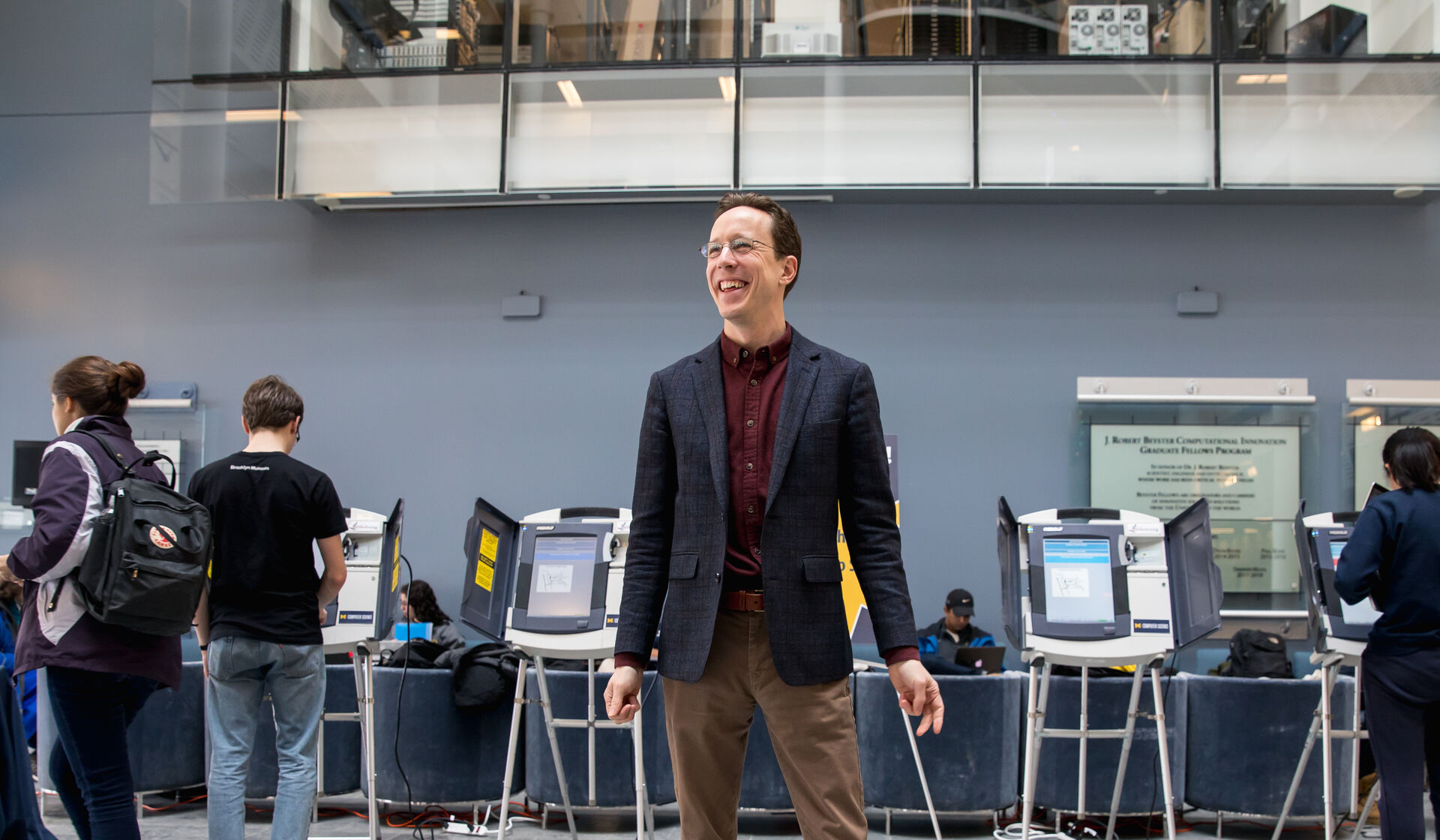As the creator of the “bit,” Claude Shannon became known as the “father of the digital age”—the man responsible for technology that evolved into today’s computers and other digital technology. Here, his biographers tell the story of his U-M years.
If you were looking for world changers in the U-M class of 1936, you probably would not have singled out Claude Shannon. The shy, stick-thin young man from Gaylord, Michigan, had a studious air and, at times, a playful smirk—but none of the obvious aspects of greatness. In the Michiganensian yearbook, Shannon is one more face in the crowd, his tie tightly knotted and his hair neatly parted for his senior photo.
But that unassuming senior would go on to take his place among the most influential Michigan alumni of all time—and among the towering scientific geniuses of the 20th century.
We owe Claude Shannon, ’36, HSCD’61, a debt: he was among the foremost founders of the digital age. His theoretical and engineering work paved the way for the computers we use every day and for the near-instantaneous transmission of information on which the internet relies. It was Shannon who created the “bit,” the first objective measurement of the information content of any message—but that statement minimizes his contributions. It would be more accurate to say that Claude Shannon invented the modern concept of information. Scientific American called his groundbreaking 1948 paper, “A Mathematical Theory of Communication,” the “Magna Carta of the Information Age.”
We’ve spent the past five years researching Shannon’s life and work; combing through his archives and papers; interviewing his friends, family, and colleagues; and writing his first-ever biography. We learned that his contributions to computing and information theory are surprisingly accessible even to nonspecialists, perhaps because they wrestle with questions many of us have pondered: “How predictable are we when we communicate?” “What makes a thinking machine think?”
We also learned that the same genius who wrote some of the most influential papers of the 20th century was also a playful tinkerer and gadgeteer who far preferred puttering around his custom-built home workshop to attending academic conferences and receiving honorary degrees.
And we learned that the journey that took Shannon from anonymity to scientific celebrity started in Ann Arbor, where student life in the 1930s wasn’t so different from student life these days—undergrads still focused on their parties along with their studies.
Shannon was not much for parties, but his sense of humor tended toward elaborate practical jokes (like the machine he later built whose sole function was to turn itself off). He also took an active role in campus life—along with the Math Club, he was a member of the Radio Club and, perhaps surprisingly for a certified geek, a talented gymnast. But the University’s most formative impact on Shannon wasn’t any of its extracurricular or social offerings—it was the way it encouraged Shannon to keep a foot in both applied and theoretical disciplines, a marriage of the practical and the abstract that would mark Shannon’s work for the rest of his career.
He chose to double major in engineering and mathematics, a decision that set him up to make important contributions to both fields. At the time, though, he saw his dual degree less as part of a grand design for his career than as the product of indecision.
“I wasn’t really quite sure which I liked best,” he recalled in an unpublished interview in 1977. Earning two degrees instead of one wasn’t particularly onerous: “It was quite easy to do because so much of the curriculum was overlapping. I think you needed two extra courses and some summer school to get degrees in both fields.” Those studies gave him his first taste of communication engineering, the field in which he made his greatest mark and which he found especially interesting for its blend of practice and theory: it was “the most mathematical, I would say, of the engineering sciences.”
As an engineering student, Shannon could take advantage of the University’s state-of-the-art facilities. Many of them were constructed under the leadership of the College of Engineering’s Dean Mortimer Cooley. According to University historian Anne Duderstadt, under Cooley’s watch, the college’s “enrollments … grew from less than 30 to more than 2,000, the faculty from three instructors teaching several courses to more than 160 professors and staff teaching hundreds of courses, and a temporary shop of 1,720 square feet to over 500,000 square feet of well-equipped buildings.”
A public engineering exhibition during Cooley’s tenure in May 1916 displayed the fruits of that expansion. Ten thousand people came to tour the facilities and take in the latest technological marvels. Electrical engineers sent messages over a primitive wireless system. Mechanical engineers, reported the Michigan Alumnus, “surprised their visitors by sawing wood with a piece of paper running at 20,000 revolutions per minute, freezing flowers in liquid air, and showing a bottle supported only by two narrow wires from which a full stream of water flowed—a mystery solved by few.” Two full torpedoes, two large cannons, and “a complete electric railway with a block signal system” rounded out the demonstrations.
Cooley had retired at the end of a 47-year career at the University by the time Shannon arrived, but it’s fair to say that the campus decisively bore Cooley’s stamp. In the engineering buildings, where Shannon spent the bulk of his time, his classmates tried the strength of shatterproof windshield glass, worked to muffle milk-skimming machines, and floated model battleships on a sunless indoor model sea.
But perhaps most importantly for Shannon’s intellectual development, the College of Engineering had begun to offer courses in the theory of wireless telegraphy and telephony, aiming to meet the growing commercial need for engineers trained in wireless transmission. It was in such courses that Shannon would have been first exposed to the work of Harry Nyquist and Ralph Hartley, early pioneers of information theory that Shannon would credit as formative influences in “A Mathematical Theory of Communication.”
As the “mathematical” in the title hints, Shannon was as interested in the theoretical underpinnings of communication as in the engineering challenges—and here, again, the University whetted Shannon’s intellectual appetite. His studies as a mathematics major exposed him to some of the leading journals in the field. In 1934, it was in one of these journals that Shannon, at the age of 17, secured his very first publication credit. He had worked out the solution to a math puzzle published in the American Mathematical Monthly and landed a spot in the “Problems and Solutions” section. A few months later, he was back in the same journal with the solution to another problem.
These were more akin to solving brainteasers than contributing original theoretical work, but they still offer a valuable window into the education of Claude Shannon. We can infer from them that the college-aged Shannon understood the value of appearing in a professional public forum, one that would earn the scrutiny of mathematicians his age and the attention of those older than him.
That he was reading such a journal at all hints at more than the usual attention paid to academic matters; that his solutions were selected points to more than the usual talent. Above all, his first publications tell us something about his growing ambition: taking time out from the usual burdens of classes and college life to study these problems, work out the answers, and prepare them for publication suggests that he already envisioned something other for himself than taking over his father’s furniture business in small-town Gaylord.
Finally, Shannon had the University to thank for the beginnings of his “something other.” In a career-making moment of serendipity in the spring of 1936, Shannon noticed a postcard-sized job advertisement tacked to an engineering bulletin board. The job was overseeing the differential analyzer at MIT, an analog computer the size of a room. Physicist Philip McCord Morse described the computer, the most advanced thinking machine of its day, as “a fearsome thing of shafts, gears, strings, and wheels rolling on disks.” Shannon’s engineering and math background left him well-suited for the job and for further study at MIT as a master’s student (and later as a Ph.D. candidate).
Shannon’s study of the electrical switches directing the guts of the differential analyzer led him to an insight at the core of our digital age: that switches could do far more than control the flow of electricity through circuits—that they could be used to evaluate any logical statement we could think of, could even appear to “decide.” A series of binary choices—on/off, true/false, 1/0—could, in principle, perform a passable imitation of a brain. That leap, as writer Walter Isaacson put it, “became the basic concept underlying all digital computers.” Shannon’s career had launched with what Harvard University professor Howard Gardner called “possibly the most important, and also the most famous, master’s thesis of the century.” He was just 21.
That thesis, in turn, was the prelude to Shannon’s most transformative accomplishment of all, the “Mathematical Theory of Communication,” published when he was 32. His paper not only invented the bit. It gave engineers the conceptual tools to digitize information and send it flawlessly (or, to be precise, with an arbitrarily small amount of error), a result considered hopelessly utopian up until the moment Shannon proved it was not. That insight is embedded in the circuits of our phones, our computers, our satellite TVs, our space probes still tethered to the earth with thin cords of 0s and 1s.
As Shannon’s biographers, we set out to tell the story of his life, not to explain the sources of his genius—an impossible task, at any rate. But we can say this with confidence: Shannon was distinctive in the broad range of problems he tackled, in the broad scope of disciplines with which he was comfortable, in his commitment to being a generalist rather than a specialist. As such, he was capable of looking at longstanding problems in computing and communication with new eyes. And that crucial story—the story of Shannon’s fruitful refusal to specialize—began at the University of Michigan.
Gadgeteer Extraordinaire
Claude Shannon was a pioneer of digital computing and the information age—but he was also a world-class tinkerer and gadgeteer who invented, among other things, these novel machines:
- A maze-solving robotic mouse (named Theseus), pictured above
- A flame-throwing trumpet
- An early chess-playing computer, capable of handling six pieces
- A calculator that operated in Roman numerals (named Thrifty Roman-Numeral Backward-Looking Computer or THROBAC)
- A series of customized unicycles, including an off-center unicycle intended to increase the difficulty of simultaneously riding and juggling
- One of the first wearable computing devices, used to calculate roulette odds (co-created with Ed Thorp)
- The Ultimate Machine, a box containing a robotic hand whose only function was to turn itself off
A Mind at Play
The following is an excerpt from “A Mind at Play: How Claude Shannon Invented the Information Age,” by Jimmy Soni and Rob Goodman.
For one thing, Shannon’s body of work is a useful corrective to our era of unprecedented specialization. His work is wide-ranging in the best sense, and perhaps more than any twentieth-century intellect of comparable stature, he resists easy categorization. Was he a mathematician? Yes. Was he an engineer? Yes. Was he a juggler, unicyclist, machinist, futurist, and gambler? Yes, and then some. Shannon never acknowledged the contradictions in his fields of interest; he simply went wherever his omnivorous curiosity led him. So it was entirely consistent for him to jump from information theory to artificial intelligence to chess to juggling to gambling—it simply didn’t occur to him that investing his talents in a single field made any sense at all.
There were links from field to field, of course. And it goes without saying that Shannon understood the bridges between his work in information theory and his work on robotics and investing and computer chess. Few have had a better intuitive sense of how the information revolution would fundamentally alter our world in all its aspects. But that sense led Shannon to choose exploration rather than specialization. He could have continued to trade on the success of information theory for decades. By the time he arrived at MIT, though, his attention was elsewhere. Students of that era recall that Shannon himself just didn’t seem especially engaged by information theoretic questions and problems; however, if you brought him something in robotics or artificial intelligence, they recalled, his ears perked up and he paid special attention.
…
This indifference to seeming contradictions extended to the way he lived his life. He had the option of worldwide fame, yet he preferred to remain largely anonymous. He wrote pathbreaking papers, then, unsatisfied with their present state, postponed them indefinitely in favor of more pressing curiosities. He made himself wealthy by studying the movements of markets and the potential of start-ups, yet he lived with conspicuous modesty. He reached the heights of the ivory tower, with all the laurels and professorial chairs to prove it, but felt no shame playing games built for children and writing tracts on juggling. He was passionately curious, but also, at times, unapologetically lazy. He was among the most productive, honored minds of his era, and he gave the appearance that he would chuck it all overboard for chance to tinker in his gadget room.
Rob Goodman is a doctoral candidate at Columbia University and a former congressional speechwriter. He has written for Slate, The Atlantic, and Politico, and his scholarly work has appeared in the American Political Science Review and History of Political Thought.
Jimmy Soni has served as an editor at the New York Observer and the Washington Examiner, and as managing editor of the Huffington Post. He is a speechwriter, and his written work and commentary have appeared in Slate, The Atlantic, and CNN, among other outlets.





